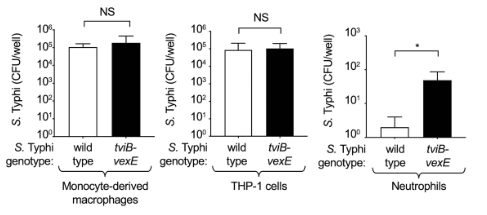A group from Department of Medical Microbiology and Immunology, University of California at Davis, Davis, California, USA, etc. has reported about duality of the Vi Capsular Polysaccharide of Salmonella Typhi.
https://journals.asm.org/doi/10.1128/mbio.02733-22
Bacterial pathogens overcome innate host defenses by either (i) evading opsonization and phagocytosis, which is the strategy used by extracellular pathogens, or (ii) evading killing during phagocytosis and take residence within the phagocyte, which is the approach taken by intracellular pathogens.
The enterica serovar Typhi is the causative agent of typhoid fever, a severe disseminated infection characterized by persistence of the pathogen in small granulomas, termed typhoid nodules, which are accumulations of mononuclear phagocytes and lymphocytes. S. Typhi synthesizes a virulence-associated (Vi) capsular polysaccharide, also known as the Vi-antigen, which protects bacteria from opsonization with natural IgM, thereby preventing engulfment by phagocytic host cells such as neutrophils and macrophages. However, it is paradoxical that S. Typhi has such an antiphagocytic capsule, because S. Typhi is typical intracellular pathogen.
In this work, the duality of the S. Typhi Vi capsular polysaccharide was shown. The Vi capsular antigen allows S. Typhi to selectively evade phagocytosis by neutrophils, while promoting macrophage phagocytosis, by binding to DC-SIGN, C-type lectin expressed on macrophages.

where, tviB-vexE is a mutant of S. Typhi with noncapsulated
